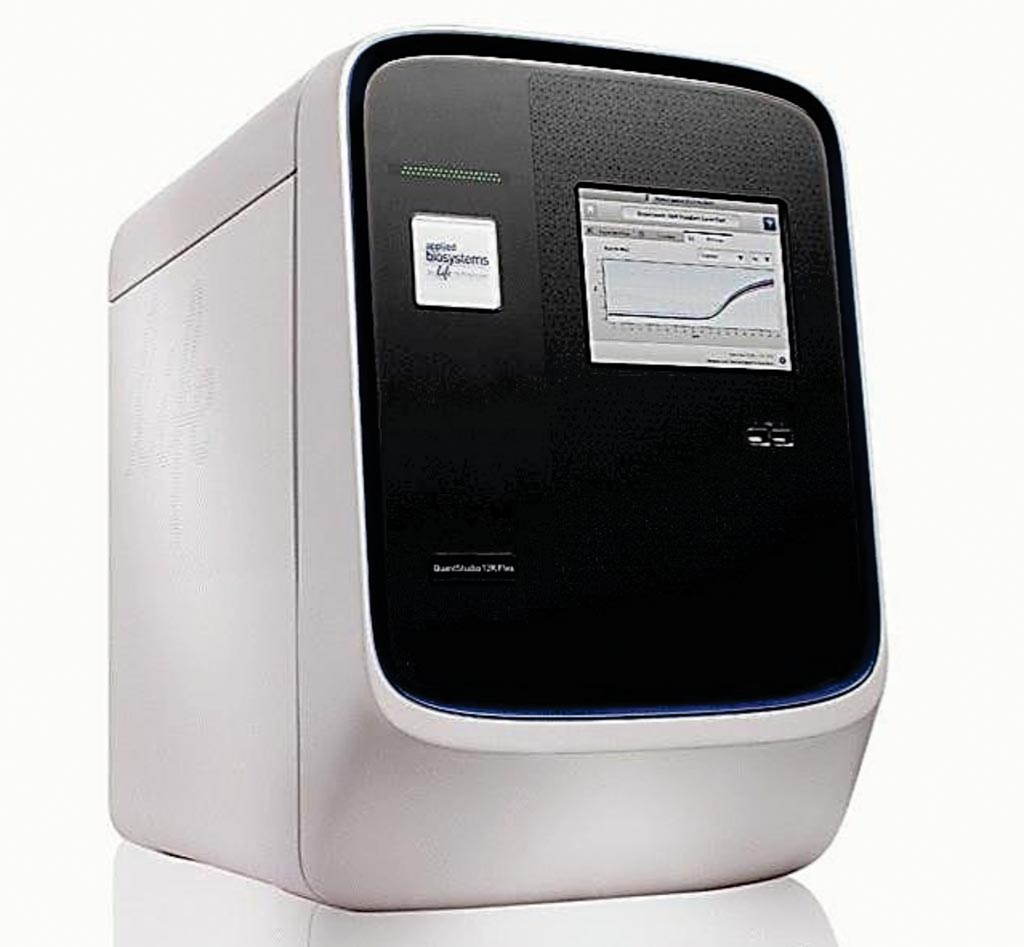Gene Expression Profiling Validated for Uveal Melanoma
By LabMedica International staff writers
Posted on 29 Aug 2017
Uveal melanoma is a cancer of the eye involving the iris, ciliary body, or choroid (collectively referred to as the uvea). Tumors arise from the pigment cells (melanocytes) that reside within the uvea giving color to the eye.Posted on 29 Aug 2017
Gene expression profiles that are associated with low-risk (Class 1A), intermediate-risk (Class 1B), or high-risk (Class 2) outcomes have been shown to provide information useful for risk-tailored surveillance plans. A 15-gene expression profile test has been clinically validated and is widely utilized in newly diagnosed uveal melanoma (UM) patients to assess metastatic potential of the tumor.

Image: The QuantStudio 12K Flex system is a highly flexible, comprehensive real-time PCR platform (Photo courtesy of Thermo Fisher Scientific).
A team of laboratory scientists from Castle Biosciences, Inc (Phoenix, AZ, USA) evaluated the performance metrics of the test in a CLIA-certified laboratory setting, describe the rate of technical success on both fine needle aspirate biopsy (FNAB), as well as formalin-fixed paraffin embedded (FFPE) tissue from enucleations, and report correlations with pathological variables. All samples were acquired during routine clinical testing for risk prognostication in UM patients.
The scientists used the Castle Biosciences’ DecisionDx-UM gene expression profiling test and now perform the quantitative polymerase chain reaction (qPCR) on a QuantStudio 12K Flex Real-Time PCR system. De-identified DecisionDx-UM test results from January 2010 through May 2016 were analyzed according to tissue type, successful molecular classification, and resultant class assignment.
From January 2010 to May 2016, 5,516 tumor specimens were tested. Of these, 4,829 (88%) were FNABs and 687 (12%) were FFPE, the vast majority of which were 5-μm sections from enucleations and the remaining as FFPE cell blocks. Gene expression profiling was successful for 96.35% of these tumors: 43.4% were Class 1A, 22.4% were Class 1B, and 34.2% were Class 2. The teams found that inter-assay concordance on 16 samples run on three consecutive days were 100%, and matched discriminant scores were strongly correlated and inter-assay concordance of 46 samples assayed within a one year period was also 100%.
The authors concluded that their results show that the 15-gene expression profile test for UM has robust, reproducible performance characteristics. The technical success rate during clinical testing remains as high as first reported during validation. The performance of the 15-gene expression profile test in this study should provide confidence to physicians who use the test’s molecular classification to inform patient management decisions. The study was published on August 4, 2017, in the journal Diagnostic Pathology.
Related Links:
Castle Biosciences








 (3) (1).png)





